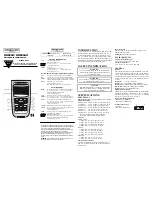
A control that is stable at low temperatures will usually be stable at high tem-
peratures. Conversely, if a system is just about stable at high temperatures, it
will most probably be unstable at lower temperatures, i.e. vibrate.
The viscosity of the heat transfer liquid changes drastically with the tem-
perature. At low temperatures, liquids are more viscous. The control quality is
therefore generally poorer at low temperatures. For this reason, the control
setting should be towards the lower end of the temperature range.
If the temperature range of an application is -20
to
80 °C, for example, a
control setting of -10
to
20 °C is most suitable.
If the Xp parameter selected is too large, the actual value will reach the
proportional range early and the P-component will be less than 100 % of
the actuating signal. It takes longer to reach the target value and as a result,
the simultaneously integrated I-component has more time to establish its
actuating signal component. Once the target value is reached, the excessive
addition of the I-component causes the value to overshoot the target value.
If proportional range Xp is reduced, the P-component remains at 100 %
for longer. Consequently, the actual value approaches the target value more
quickly and the I-component has less time to integrate the system deviation.
The overshoot is reduced.
Effects of viscosity on the heat transfer
liquid
Influence of control parameters on the
control behavior
Fig. 60: Ideal setting
Fig. 61: Control parameter Xp too large
V6
PRO bath thermostats and circulation thermostats
98 / 156
Summary of Contents for P 10
Page 146: ...V6 PRO bath thermostats and circulation thermostats 146 156 ...
Page 147: ...V6 PRO bath thermostats and circulation thermostats 147 156 ...
Page 148: ...V6 PRO bath thermostats and circulation thermostats 148 156 ...
Page 157: ......
Page 158: ......
Page 159: ......
















































